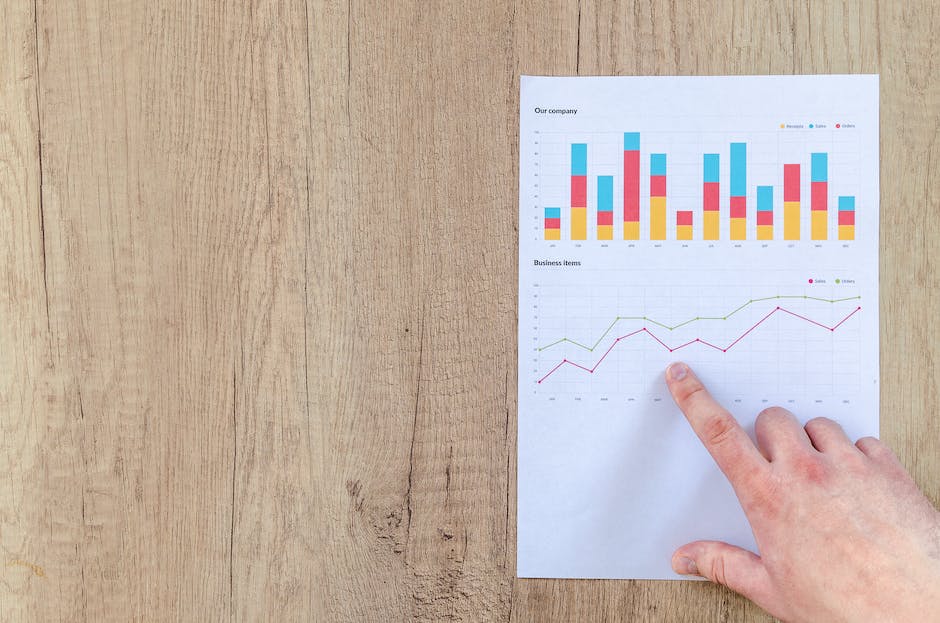As human resources (HR) professionals, we are constantly looking for ways to improve our departments. Technology has become an integral part of most industries, and HR is no exception! Companies have a plethora of software that they use to manage their internal processes and services.
Many companies now rely heavily on technology to help them predict potential problems before they occur. This predictive analytics helps identify negative trends so steps can be taken to prevent or mitigate failure.
In this article, you will learn about some easy-to-use tools designed specifically for employees. These apps monitor employee behavior such as productivity, attendance, and communication, and determine if there are warning signs of trouble.
If someone needs assistance, the app provides step-up support to help them get back on track. The goal of these apps is not to punish but rather to give people chance to fix themselves and lead healthy lives.
It’s important to note that these applications don’t tell anyone what happened, only whether something out of place occurred. If it did, then professional help is offered to restore order.
There is also an emphasis on educating users about mental health conditions and how to best address them. An interactive chart may even pop up telling users when it’s time to seek medical attention. All this information is anonymous and private unless you choose to make it public.
Applications of predictive analytics

One of the most prevalent uses of predictive analytics is in human resources (HR) departments. Companies use these tools to determine if an individual should be given a promotion, paid more, or even fired.
A growing number of companies are using AI-powered HR software to predict potential performance issues so that action can be taken before it becomes a problem. For example, someone may feel overwhelmed with too many responsibilities, which could potentially lead to underperformance and poor results.
The software will look at past behavior to identify signs of such burnout and take appropriate measures to prevent it. An organization might give an employee some time off to address mental health concerns, for instance.
Another area where AI helps employers is recruitment. By analyzing social media profiles and other data, the system can find clues about potential employees’ habits, values, and behaviors. This gives you more information to evaluate them as professionals and people — something most recruiters already do naturally.
Challenges of predictive analytics

A growing number of companies are incorporating predictive analytic tools into their business practices, but there are still some major hurdles to overcome.
One of the biggest challenges is actually using the tool once it’s integrated into your work flow. Many times, people who use these applications become distracted by the numbers and lose focus on the task at hand.
If you find that happening, don’t feel bad- it happens to us all!
That said, most individuals won’t ever make it beyond the early stages of predictive analytics unless they learn how to apply these tools with discipline. You have to understand why things move around the numbers and what influence those numbers will have on future decisions.
It’s important to remember that no matter how advanced the software gets, someone will always need to take action on the data.
Ways to implement predictive analytics

Implementation of predictive analytics is not as straightforward as just putting together some features and models! There are several ways you can implement this process into your workplace. Some of the most common implementations include:
Using pre-existing tools or creating your own internal algorithms and metrics
Training staff members about predictive modeling
Engaging external vendors for help with developing prediction models
Integrating AI/machine learning systems directly within the organization
Business experts have published many tips and tricks for implementing predictive analytics in HR. Most focus on either using existing, vetted predictive analytics software, or helping employees develop their intuition around predicting positive and negative outcomes related to employment.
There are also strategies to use when employing AI or machine learning systems, such as how best to train an algorithm, what types of data to feed it, and how to evaluate its accuracy. In addition, business professionals discuss which departments in an organization should be responsible for keeping tabs on model performance, and whether that responsibility lies only with someone internal or both internal and external stakeholders.
Take advantage of the data

As we’ve mentioned, predictive analytics is not new, but what may be newer is using it for employment purposes. Companies have been collecting vast amounts of employee data for years now- mostly to do with internal processes and services.
But what if there was another way to use this information? What if you could apply advanced statistical models to determine how likely an individual is to perform poorly and why? What if you could predict when they are most vulnerable so that you can take action or prepare for their departure?
This article will talk about some ways companies are incorporating predictive analytics into their human resources (HR) departments and practices. There may even be opportunities at your current job!
The reasons HR professionals should care about predictive analytics
If you’re reading this article, you probably already know something about predictive analytics. You may have done some simple statistics before and maybe heard of more complex ones like regression analysis and logistic regressions.
However, what many people don’t realize is that much of the theory behind these methods applies directly to business decisions and applications. In fact, one of the basic concepts of prediction — accuracy estimation – has become quite popular in social media and marketing settings.
In this article, we’ll discuss three key areas where predictive analytics can help your organization: recruitment, performance management, and compensation. Let’s look closer at each one.
Don’t get too caught up in the numbers

Even though predictive analytics can help you identify potential problems, don’t over-interpret the results. This could lead to unnecessary stress or even disciplinary action.
Predictive analytics is great for identifying trends before they occur, but it cannot determine whether those trends will come to pass.
It also doesn’t tell you what people outside your organization think of you, which can be just as important when deciding how to manage someone.
So, while these tools are helpful, there is still value in using other methods to assess performance.
Look at the whole picture

As we mentioned, predictive analytics is not just about predicting if someone will do something or not, it’s also looking at the bigger picture of their behavior to determine whether they are likely to perform well or not.
For example, let’s say you work for a company that offers its employees paid vacations every year. A lot of people enjoy getting these rewards so most people take them, but not everyone does. Some workers feel that taking time off is unnecessary because they can afford to be out of the workplace for several weeks at a time.
If you look at the data, though, you may find that some of those who don’t use all of their allotted vacation days tend to be higher performers than those who do. In fact, there might even be a correlation between how many days an employee has taken and how much he or she earns, making it possible to predict which individuals are underperforming and possibly need more guidance or encouragement from management.
By using predictive analytics to examine past performance, you can help ensure that all of your employees know what is expected of them and give appropriate feedback, helping them achieve their goals and keeping them motivated.
Learn to trust the data

As we discussed, predictive analytics are powerful tools that work with large amounts of data to determine how likely it is that an event will happen. With this knowledge, you can pro-actively prevent or mitigate what’s happening now!
With all these numbers floating around, however, there’s one major problem companies using PA run into — people don’t believe the numbers.
They think the numbers must be wrong because something has happened before that was way off track.
It happens almost every day –– employees do things they’re not supposed to, things that get them fired, things that hurt their career. Or they make mistakes due to poor decision making, which sometimes gets them promoted.
But why would anyone ever do such things? They could just as easily stay within the rules and avoid getting caught.
That’s what makes it so hard for employers to apply predictive analytics to help keep them from being terminated or moving up in their organization.
There’s a reason someone else did it before, and probably many reasons why someone else might do it again -– it doesn’t always have to be about money or lack thereof.
A big part of why people break rules is because they don’t agree with the rules. You have to understand your workplace and your department’s mission before you can effectively use predictive analytics to enforce good behavior.
Here are some questions you should ask yourself about predictive analytics.
Take action on the results

The more data you have, the better predictive analytics tools can be. With that said, how you use the information is just as important. You do not need to run with every prediction immediately.
That would not only be wasteful, it could also prove detrimental for your company. Systems that offer predictions should at least have you aware of what action to take before taking those steps.
A good example of this comes from an article written about flight delays. Many airlines now have automated systems that predict when flights will be delayed and what actions they may recommend for passengers.
These recommendations are usually to change or skip dates around travel plans but some may suggest changing planes or offering refunds. It does not matter which system recommends something, only that one does so then try to find a solution!
What if someone without the software predicts nothing? That person might miss out on valuable warnings and tips, and their job can depend on knowing such things. Technology has become integral to everyday life, make sure everyone knows what it can do.